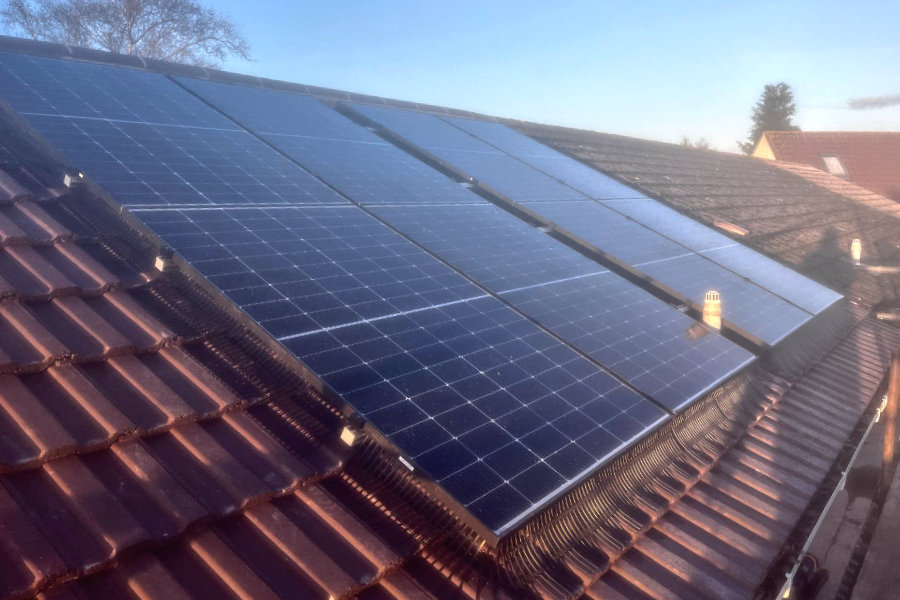The government has mandated that all house builders will be legally required to include solar panels on new homes starting in 2027. It is estimated that solar panels could save homeowners an average of £1,000 per year on their energy bills. The preferred method, largely for visual reasons, is the use of in-set solar panels. However, as expert roofers with many years of experience, we are not convinced this is the best solution.
What are in-set solar panels?
In-set solar panels (also known as in-roof, integrated, or roof-integrated panels) are solar photovoltaic (PV) systems built directly into the roof structure, rather than mounted on top of existing tiles. They replace a portion of the roof covering (e.g. tiles or slates), providing a streamlined look and potential savings on some roofing materials.
Drainage System
In-set solar panels use integrated trays, flashings and weatherproof membranes to manage rainwater, directing it into the roof’s existing drainage system. These components help prevent leaks by sealing around the panels and channelling water safely away. However, the drainage system used is similar to that found in Velux roof windows, which have been mass-produced since the 1970s, and still suffer from moss build-up that can block water flow. This can lead to water ingress into the property. We anticipate similar issues with the new generation of in-set solar panels.
Long-Term Concerns
Another concern is what happens when the solar panels begin to fail. Weatherproofing or watertightness for in-set panels is typically guaranteed for only 10 to 15 years. Once water starts getting in, the panels may need to be replaced. By that time, solar technology will likely have advanced, and replacement panels may differ in size or specification from the originals. If so, this could mean your entire roof needs replacing after just 10–15 years. In contrast, traditional roof coverings made from clay, slate, or concrete tiles can last up to 60 years.
Our Recommendation for a Reroof with Solar Panels
If you are planning to reroof with solar panels, we recommend sticking with either traditional roof-mounted solar panels or slate roof solar panels.



Traditional panels can be replaced without disturbing the roof structure, making future maintenance far simpler. If you prefer a more discreet appearance, slate roof solar panels are a great alternative. They sit flush with the roof and resemble standard grey slates—providing an elegant and durable solution.
As experienced and certified roofers, we work closely with SturmanCraig for traditional solar panel installations and GB Sol for slate roof solar panels.
If you are considering reroofing with solar panels, contact us today to discuss your options. Call 01373 462 224 or email info@westcountrytiling.com.
